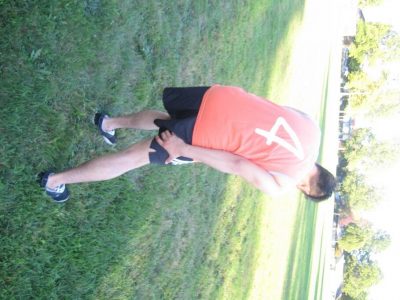An inflamed sciatic nerve causes pain that originates in the low back and radiates down one or both legs. If an individual experiences sciatic nerve pain, the last thing on mind is to exercise.
It is sad to note that inactivity leading to muscle imbalances is one of the various causes of sciatic nerve pain. It is vital to pinpoint whether or not to exercise once the symptoms are persistent which depends on the source of the pain and the type and intensity of exercise the individual intends to perform.
What is sciatica?
Sciatica is known to occur once there is pressure on the sciatic nerve. The sciatic nerve is the biggest nerve in the body that originates in the low spine and travels via the pelvic floor and buttocks and down every leg.

The sciatic nerve is responsible for controlling the leg muscles and senses pain in the legs. Once compressed, the flow of blood to the nerve is limited which results to pain and inflammation.
Possible causes of an inflamed sciatic nerve
Prior to exercising with an inflamed sciatic nerve, a doctor should be consulted to pinpoint the exact cause of the inflammation. Even though compression occurs at the spinal cord, overly tight muscles along the nerve are also a possible source of the pain.
Piriformis syndrome which involves compression of the sciatic nerve between the piriformis muscle and pelvic bones is often due to extended periods of sitting. Other possible causes include trauma from accidents or falls, degenerative disc disease, spinal stenosis, slipped disc or even spinal tumors.
Acute or chronic
A vital factor to consider in determining whether or not to exercise is to check if the symptoms are acute or chronic. If acute, they manifest abruptly as a response to a specific action or incident. As for chronic cases, the pain is an ongoing occurrence that manifested for some time.
If the inflamed sciatic nerve is acute, exercise can aggravate the issue. In such cases, it is recommended to rest and then followed by physical therapy if the pain persists after 3-4 weeks.
Exercise
When it comes to chronic cases of inflamed sciatic nerve, it is recommended to stick with regular exercise as part of the treatment. The early exercise routine must include those that are low-impact in nature.
Aerobic exercises such as moderate walking, cycling and water aerobics are suitable choices. Tai Chi, yoga and core stabilization exercises are beneficial in strengthening the muscles that support the spine. The stretching exercises and resistance training can promote balanced muscular tension and corrects misalignment of the spine.
The individual should start the exercise program in a steady manner and being careful on the feedback mechanism of the body. Gradually increase the intensity as the symptoms eventually subside.

